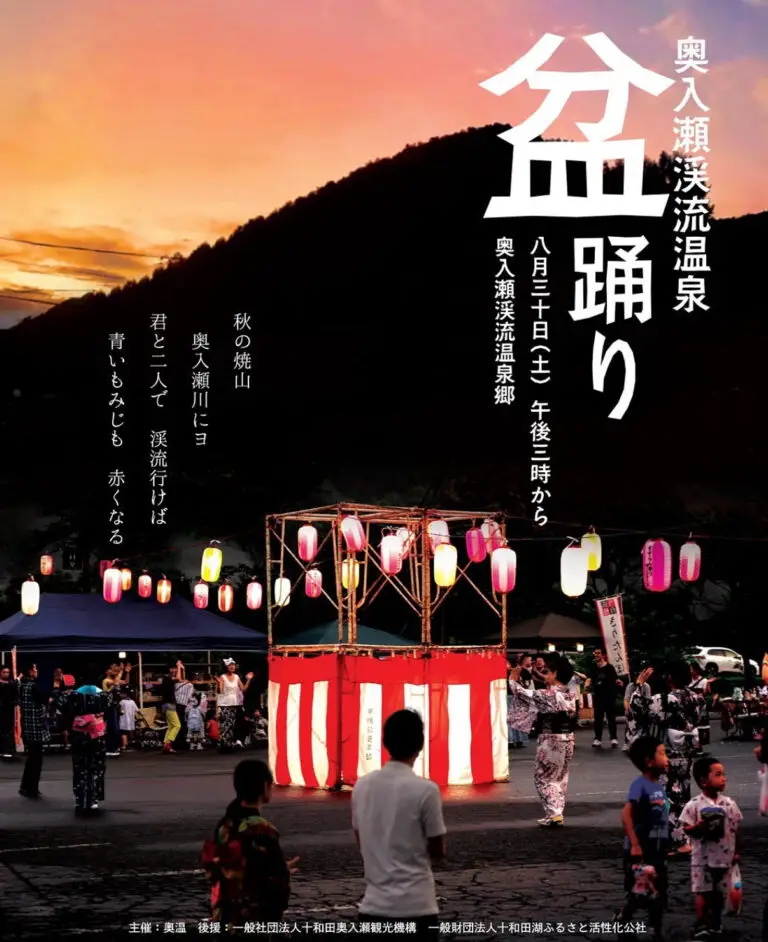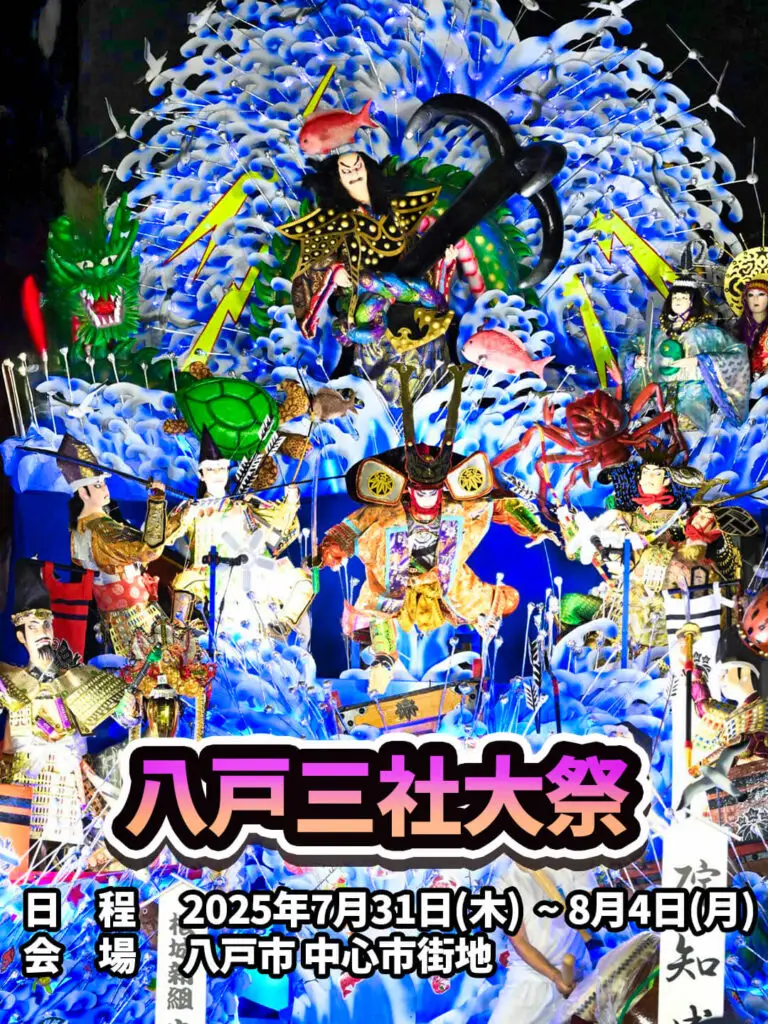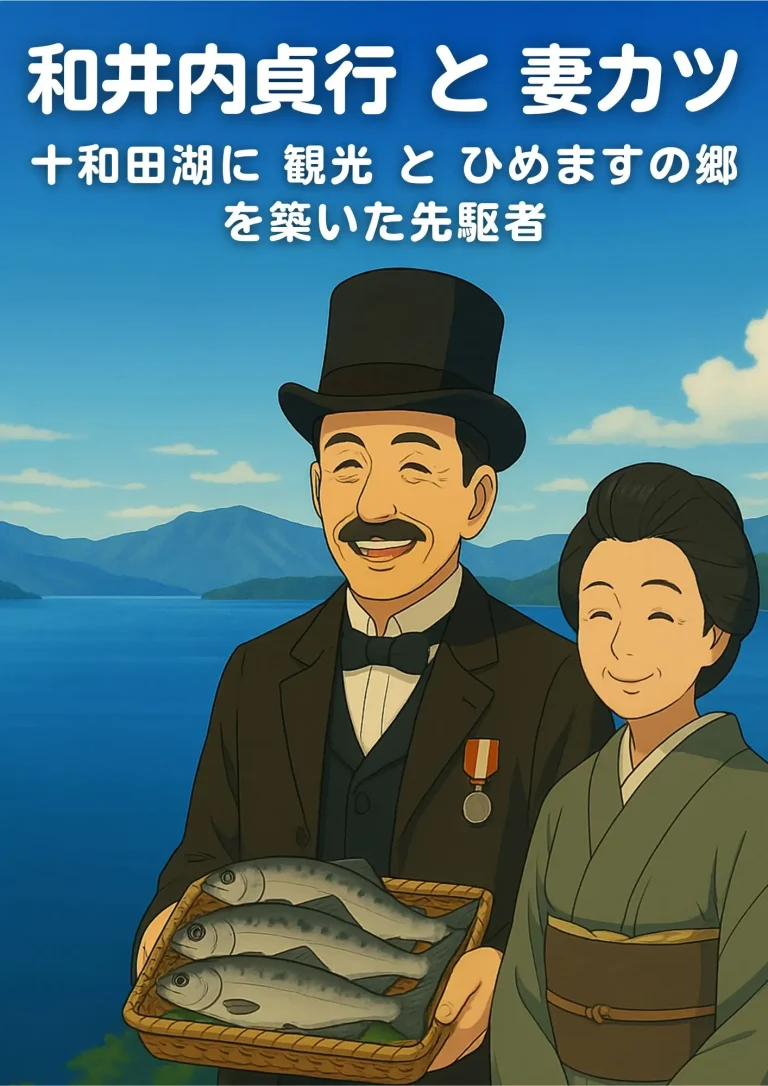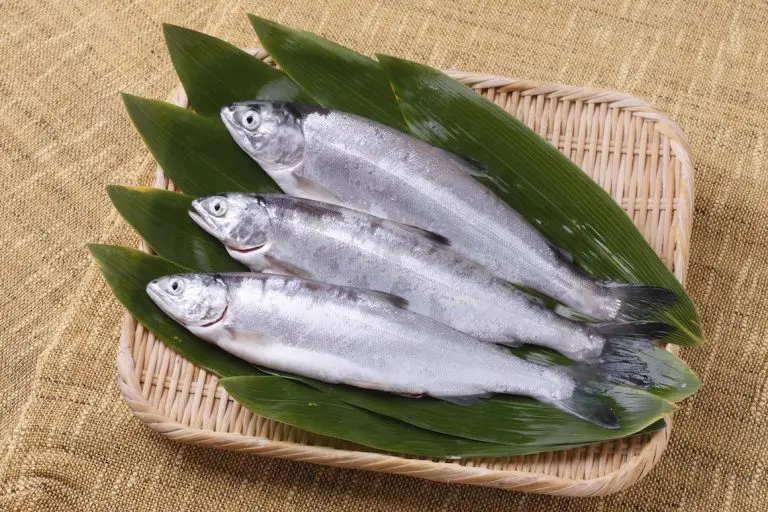Lake Towada
Lake Towada is often referred to as a mystical lake. Straddling Aomori and Akita Prefectures, it is a typical double caldera lake formed approximately 2,000 years ago through volcanic activity, where water filled a basin-shaped depression. Among Japanese lakes, it ranks third in maximum depth at 326.8 meters and twelfth in surface area. Fresh greenery can be enjoyed from May to June, while the autumn leaves begin turning in early October and reach their peak from mid to late October. In winter, the lake transforms into a dreamlike landscape, making it a year-round destination.
The Origin of Lake Towada
Lake Towada is a classic example of a double caldera lake formed by volcanic activity. It is surrounded by outer rim mountains 600 to 1,000 meters high, such as Mt. Ohanabe (1,011m), Mt. Towada (1,054m), Mt. Akaiwa (786m), Atamagura (885m), and Iwatake (880m). The Towada volcano began forming 150,000 to 200,000 years ago, initially erupting soft, easily flowing lava and ash. Later, intense activity ensued. Notably, two or three massive eruptions between 40,000 and 13,000 years ago produced pyroclastic flows that buried the mountain mid-slopes and spread over a wide area, including Hachinohe and southern Tsugaru. The repeated eruptions led to the collapse of the volcanic structure, creating the square-shaped lake basin that became Lake Towada.
Volcanic activity resumed in the southern part of the lake around 12,000 to 11,000 years ago, forming a new volcano. A major eruption around 8,500 years ago (early Jomon period) blew off the upper half of the volcano, forming a deep basin encircling the remaining Nakayama and Okura Peninsulas and giving rise to “Naka-ko,” the central lake, with a depth of 327 meters.
About 2,000 years ago (mid-Yayoi period) and again in 915 AD (Heian period), large eruptions occurred on the Okura Peninsula, scattering pumice and ash mainly across eastern areas. The 915 eruption caused pyroclastic flows that triggered massive mudslides along the Yoneshiro River in Akita Prefecture, burying many homes (e.g., Kurumidate site in Kitaakita City). A lava dome later rose from the crater, forming the dome-shaped Mt. Okura and shaping the present-day Lake Towada.
Kankodai | Kanko-dai Observatory
Located on a 583-meter-high cliff facing the deepest part of the lake (Naka-ko), Kanko-dai offers sweeping views. The Okura Peninsula extends to the right, the Nakayama Peninsula to the left, and below lie scenic views of the lake with sightseeing boats cruising. It is an ideal viewpoint for seasonal landscapes and sunsets. About 4 km from Yasumiya and 3.5 km from Shimoutarube, it has a parking lot. Note that access may be restricted in winter, so checking in advance is recommended.
“Mt. Ohanabe Observatory”
Situated at the highest point of the outer rim mountains (1,011 meters), Mt. Ohanabe Observatory provides panoramic views of Lake Towada, facing the Okura and Nakayama Peninsulas. On clear days, one can see as far as Mt. Iwate and the Hachimantai range. The road is winding and steep, requiring caution, but parking and restrooms are available. It is one of Lake Towada’s three major viewpoints.
“Shimeitei Observatory”
Located near the junction of National Route 103 and Prefectural Route 2 (Jukai Line) from the Tohoku Expressway Kosaka IC, Shimeitei Observatory sits at about 630 meters altitude. Facing Mt. Ohanabe in the Towada caldera, with the southern Hakkoda Mountains behind, this spot is known for the overlapping view of the Nakayama and Okura Peninsulas, which form a heart shape, making it a popular power spot. Once chosen as the top of “Japan’s Eight Scenic Views,” a commemorative monument stands here. Visitors can enjoy seasonal beauty, including fresh greenery and autumn foliage.
Yasumiya and Surroundings
Yasumiya, located on the southern shore of Lake Towada, is the main hub for tourists, with convenient bus access to Aomori City, Hachinohe, Hirosaki, and Kazuno. Lined with souvenir shops, eateries, hotels, and guesthouses, it is the liveliest area on the lakeshore. With attractions like walking trails and the Maiden Statue, it’s ideal for nature walks and sightseeing. Enjoy local cuisine and seasonal events, making it a must-visit part of Lake Towada tourism.
Maiden of Statue
The Maiden Statue on Lake Towada’s shore is a 2.1-meter-tall bronze sculpture by Kotaro Takamura, created in 1953 to commemorate the 15th anniversary of the lake’s national park designation. Depicting two nude women standing back-to-back, the statue harmonizes with the lake’s scenery. The model is said to be Takamura’s wife, Chieko, and the base uses black granite from her hometown in Fukushima. Nearby, a stone monument engraved with Takamura’s poem stands, making the statue a beloved lake symbol, especially during the fall foliage or snowy winter.
Towada Shrine
Located on the eastern lakeshore, Towada Shrine is a sacred site where nature, art, and spirituality converge. Once a center for ascetic monks, it enshrines Yamato Takeru and is surrounded by ancient cedar trees and moss-covered stone steps. Worshipped as a guardian deity since the Heian period, the shrine has long been protected by local clans and continues its tradition as a place to pray for agriculture, fishing, and regional peace. Also known as a power spot, it is said to offer spiritual healing, good fortune, and protection, attracting many visitors seeking inner peace.
Legend of Lake Towada
In present-day Kazuno City, Akita Prefecture, lived a hard-working youth named Yatsunotaro, who was said to be born of a great serpent’s blood. One day, after fishing for char on his way home from mountain work, he became extremely thirsty and drank ravenously from a mountain stream. When he looked around, he saw that the valley he blocked with his hands had filled with water, forming a lake. At that moment, he transformed into a giant serpent and became the lake’s deity.
Meanwhile, a monk named Nansobo, receiving a divine message from Kumano Gongen to wander in iron straw sandals until the straps broke, arrived at Lake Towada, where the straps broke. Determined to settle there and become the lake’s master, he found Yatsunotaro already in that role. They battled fiercely with mystical powers for seven days and nights, and in the end, Nansobo prevailed and became the lake’s new guardian spirit.
This legend is believed to have originated as a way to pass down the memory of the fierce 915 eruption of Mt. Towada. On the Aomori side, Yatsunotaro is also known as Hachirotaro.
Connection to Towada Shrine
This legend is closely tied to Towada Shrine in Towada City, Aomori Prefecture. The shrine enshrines Nansobo, who became the lake’s deity. Later deified as Seiryu Gongen (Blue Dragon Avatar), the shrine became a sacred place preserving this faith. Once called “Towada-yama Seiryu Gongen,” it thrived as a center of mountain asceticism. The legend adds to the shrine’s spiritual power and the lake’s mystique, contributing to its sacred atmosphere.
Ebisu and Daikoku Islands
These two small islands near Yasumiya are called Ebisu Island and Daikoku Island, each dedicated to gods of fortune and prosperity. Formed by basaltic andesitic lava from volcanic eruptions, the islands are home to Kitagoyo pines and azaleas. In autumn, the reflection of colorful leaves on the lake enhances the beauty. Known also as “Fortune Island,” legend says wishes come true if coins thrown from shore land on the islands. Many old coins remain at the lake’s bottom, adding to its mystery.
Lake Towada Sightseeing Boat
The sightseeing boat on Lake Towada operates from late April to mid-November, offering views of natural beauty from the water. There are two courses: Course A (one-way from Yasumiya to Nenokuchi, about 50 minutes) and Course B (a round-trip loop starting and ending at Yasumiya, about 50 minutes). Boarding is available at Yasumiya and Nenokuchi. Fares are 1,650 yen for adults and 880 yen for children. The boat is especially popular during fresh green and autumn foliage seasons. Service may be suspended in bad weather, so checking beforehand is advised.
Kanda River and Ryogoku Bridge
South of Yasumiya flows a small river called Kanda River, which marks the border between Aomori and Akita Prefectures. Near the river mouth stands Ryogoku Bridge. The area name “Yasumiya” comes from the days when it was a resting place for ascetics training at Towada Shrine, and for visitors. Since the Meiji era, it has been known as Yasumiya.
Towada Lake Marine Blue
Towada Lake Marine Blue is a popular café located in Yasumidaira, Kosaka Town, Kazuno District, Akita Prefecture. The log-house style café faces the lake, and its terrace offers expansive views of Lake Towada. Its signature dish is freshly baked apple pie made with Aomori-grown Fuji apples. It also serves coffee, tea, and apple-based curry. The café is closed in winter and open from spring through autumn.
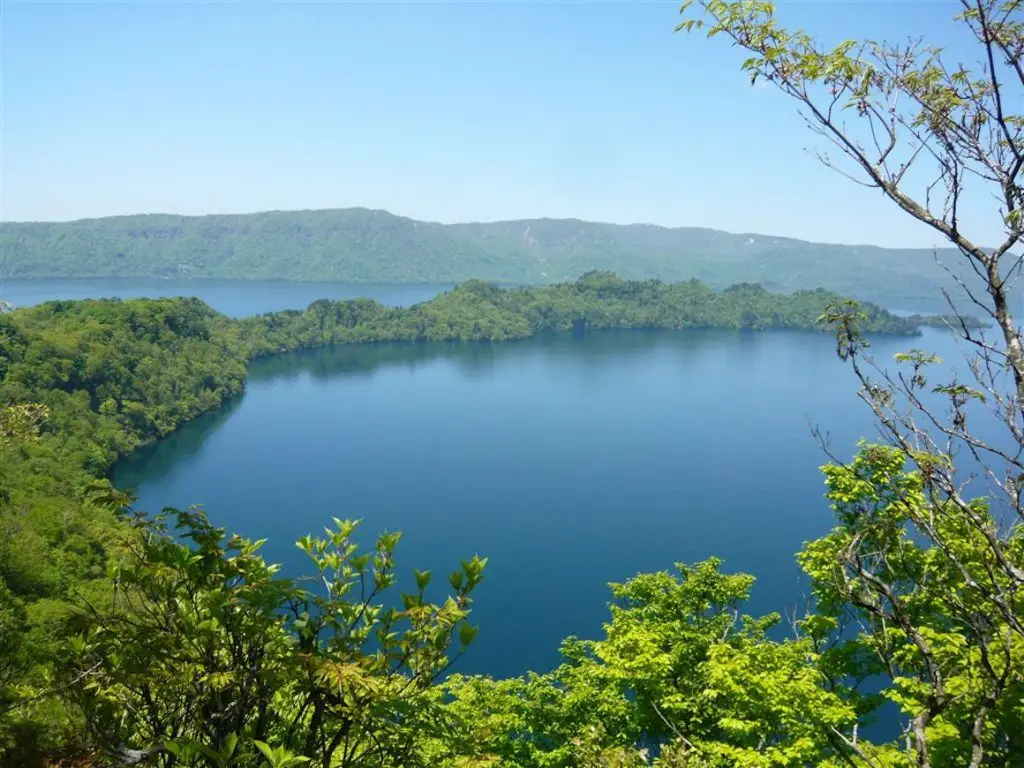
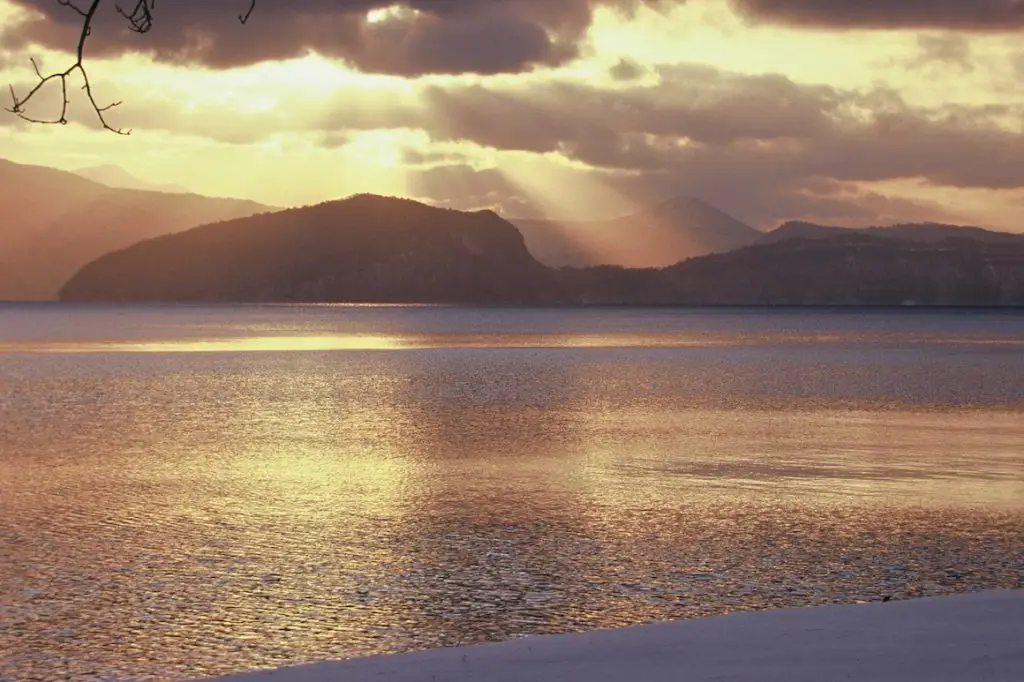
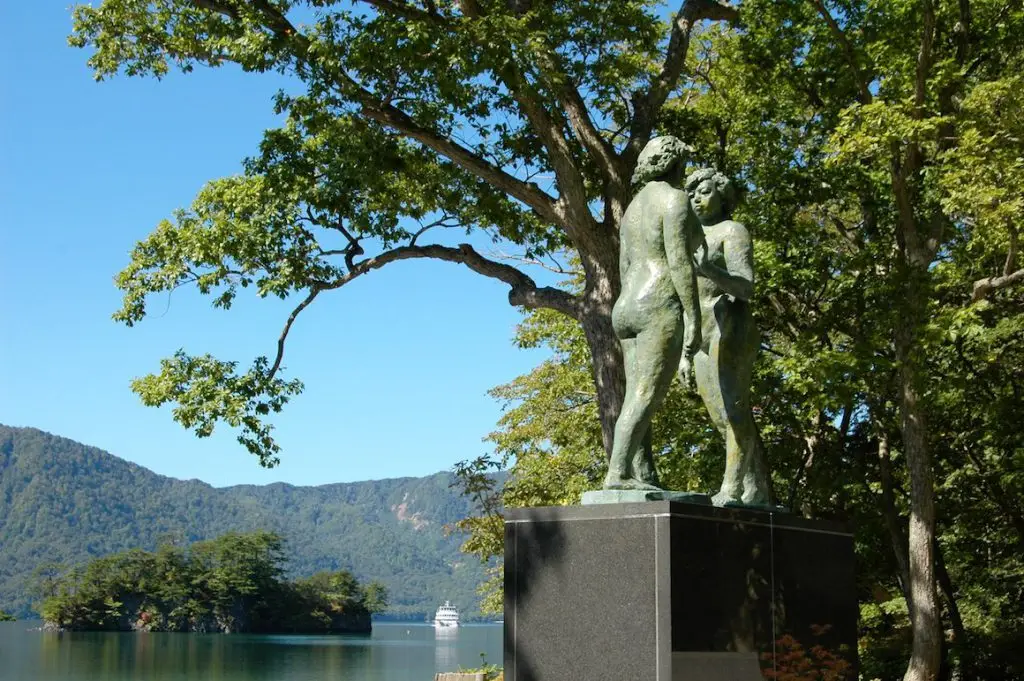
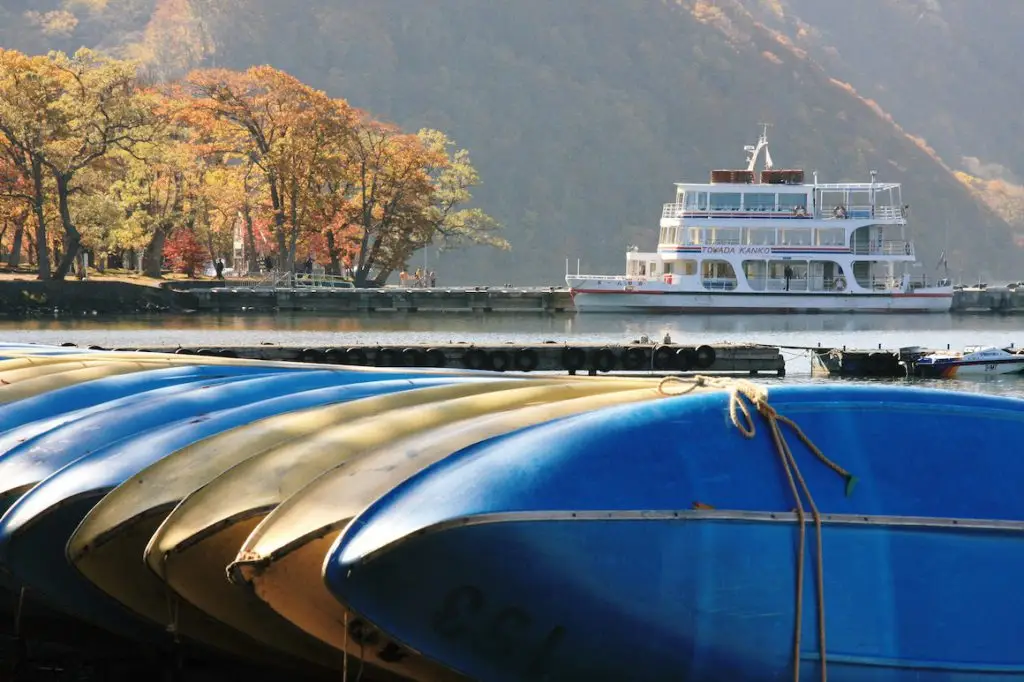
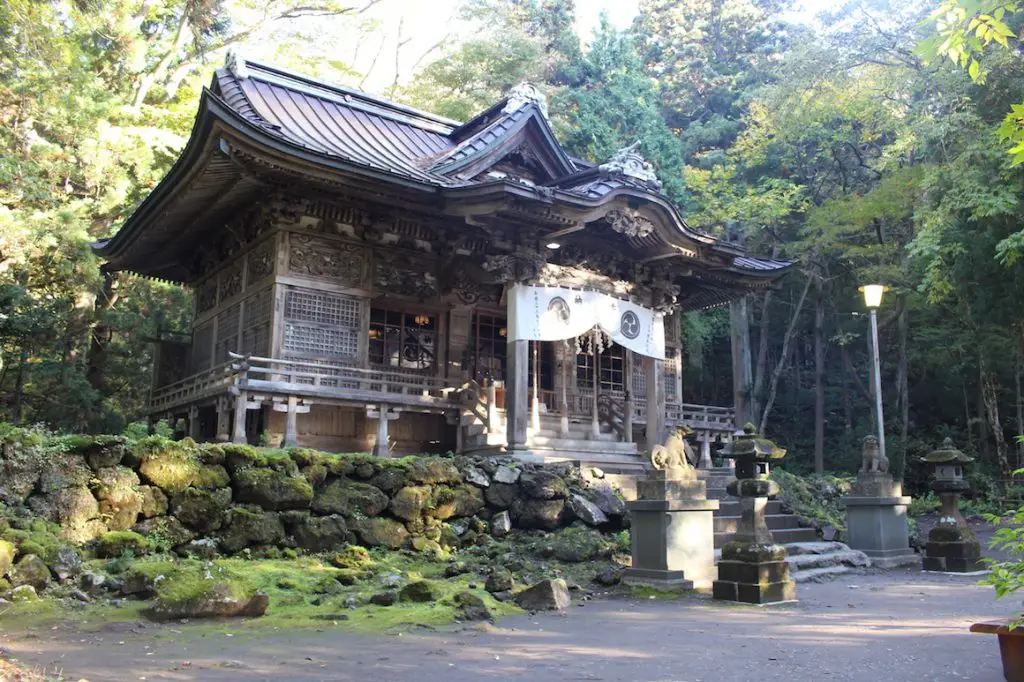
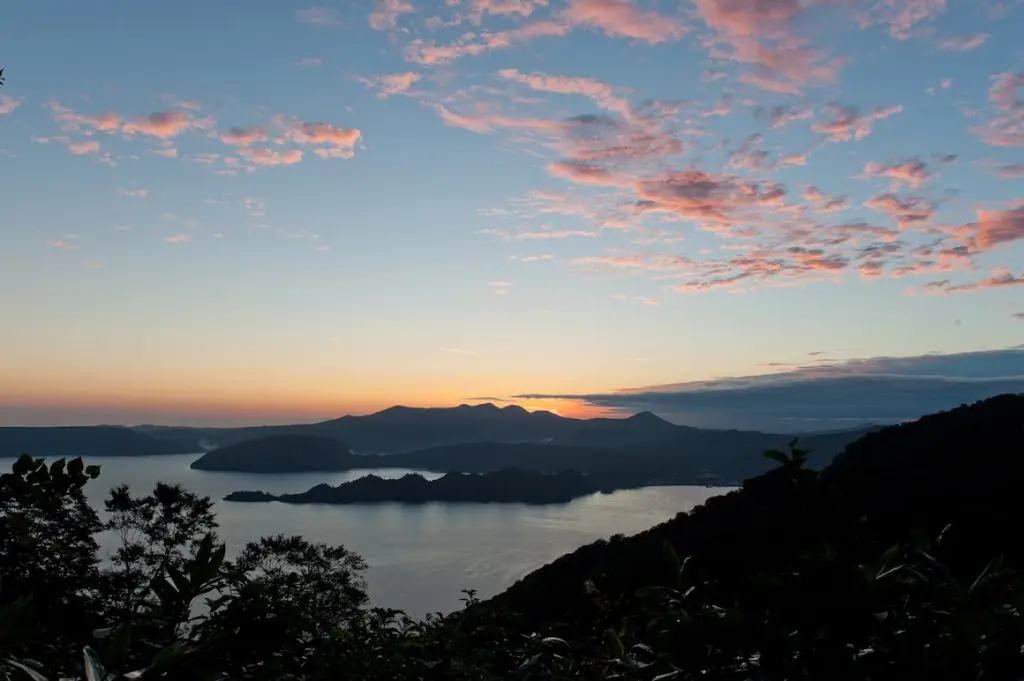
Click Here For More Info!
・日本語


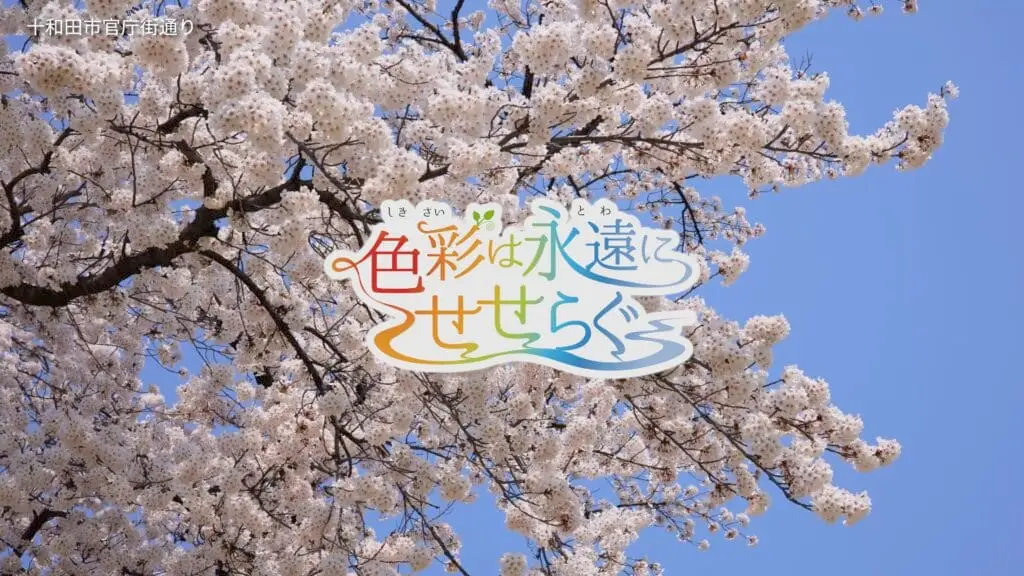





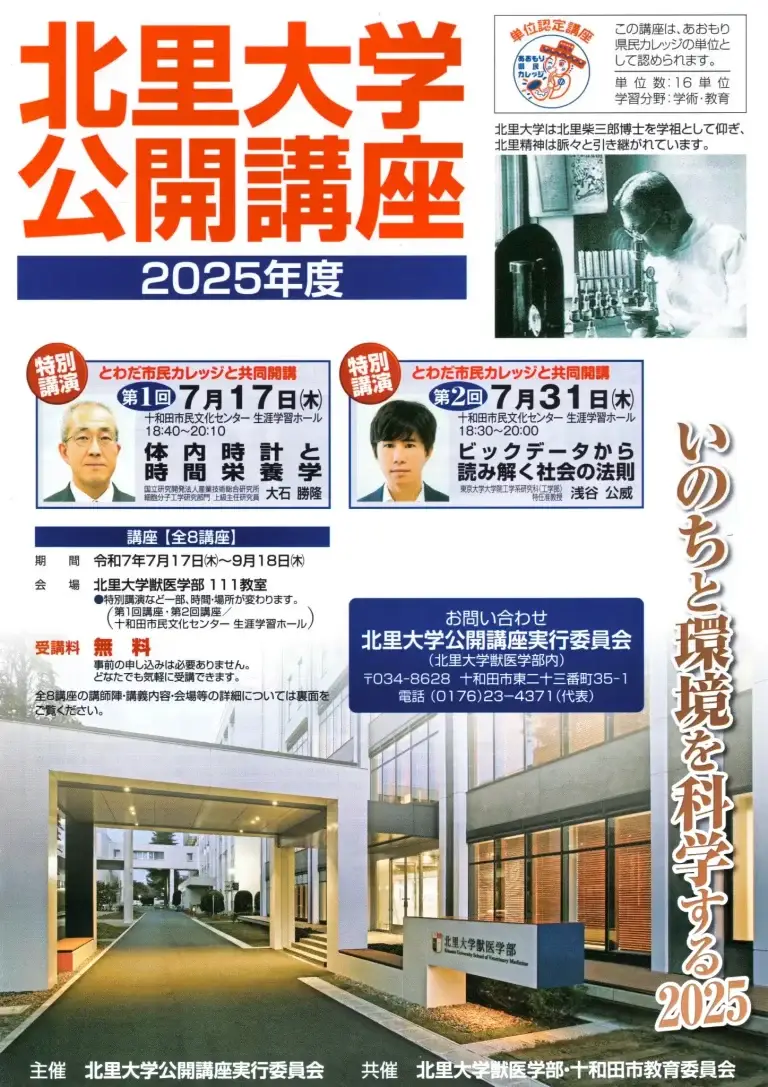


















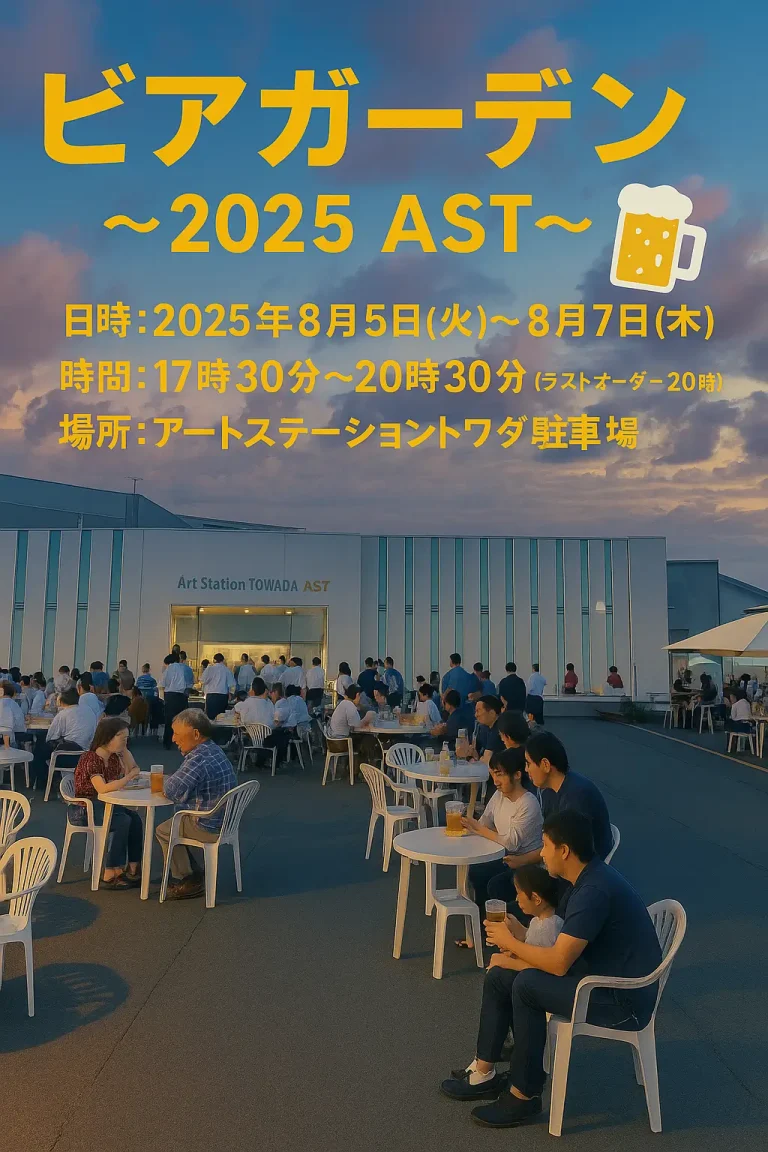
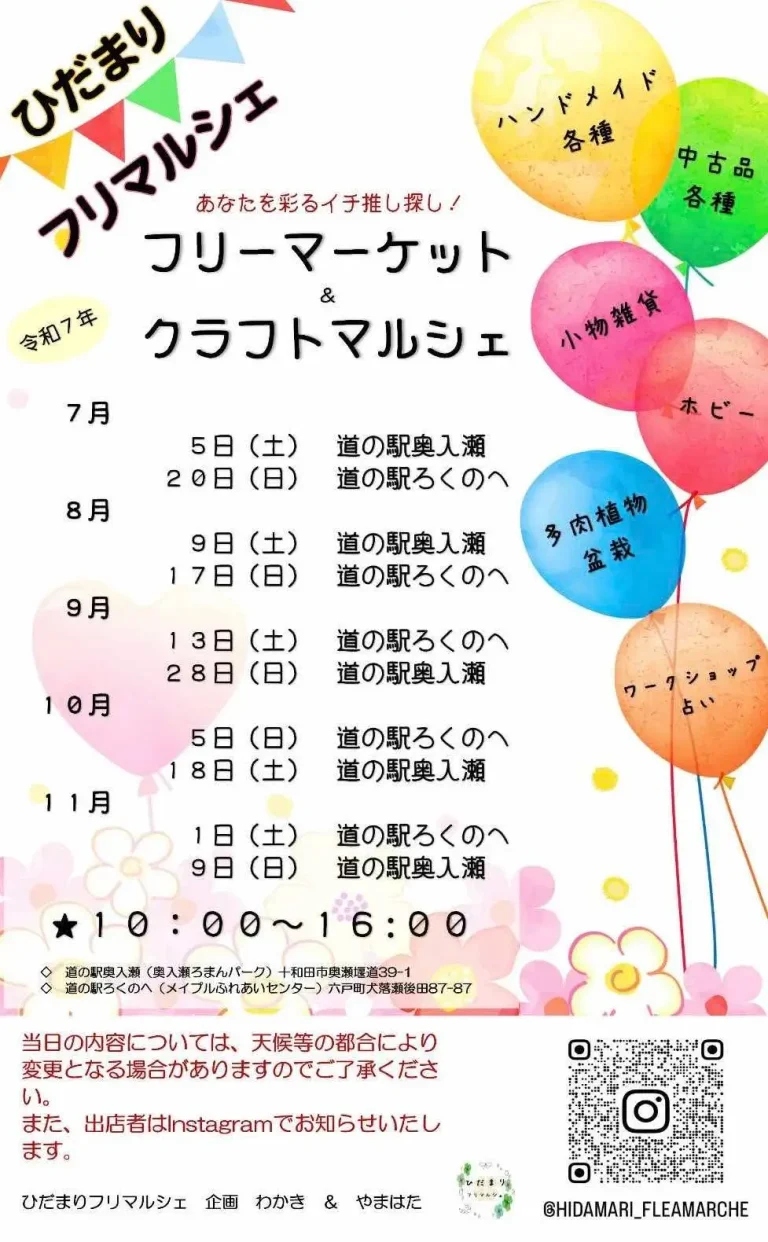




』上映会-風の草刈り講座|自然と共に生きる知恵と技術を学べる2日間|青森県十和田市-768x1095.webp)



